The type of service in table tennis helps you build up the strategy for the point. To deliver a valid service, knowledge of the table tennis serving rules is essential.
A game in table tennis is very short as it consists of only 11 points. If it is a 10-10 situation, the player gains the two-point lead and wins the game.
Now, in this quick game, each player gets an opportunity to execute 2 consecutive services by alteration. It is the only situation where he has total control of the game. He can execute a lethal service to force his opponent to make a weak return shot. Actually, at the time of service, he is the dictator of the game.
So, you may imagine the importance of service. To make it effective, you must know the official table tennis serving rules. If you avoid the rules during service, it will trap you from doing illegal serves.
Table Tennis Serving Rules Singles
- The ball must rest freely on the palm
- The ball should rise vertically for a minimum height of 16 cm (6.3 inches)
- The first bounce must be on the server’s side
- Keep the ball above the level of the playing surface and behind the end-line
- Don’t hide the ball during service
- Satisfy the umpire
1. The Ball Must Rest Freely on the Palm
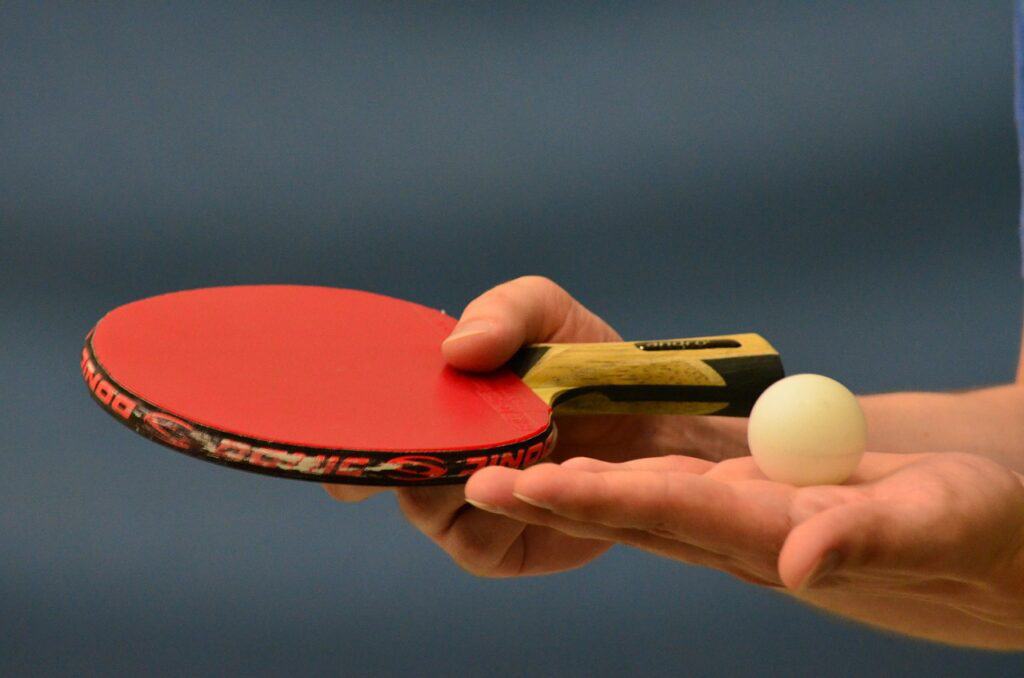
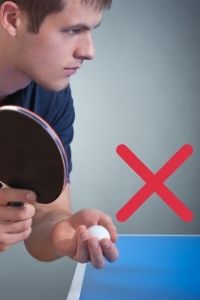
To start the service, the ball should rest freely on the palm of your stationary free hand. The rule does not allow you to hold the ping pong ball by your figure. Your palm should also be flat.
2. The Ball Should Rise Near Vertically for a Minimum Height of 16 cm (6.3 inches)
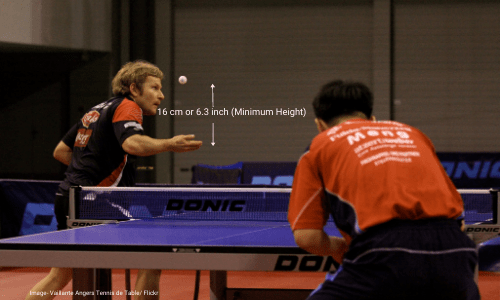
Throw the ball vertically upwards for a minimum height of 16 cm (6.3 inches) after leaving the palm of your free hand. The rule does not allow you to impart any kind of spin.
When the ball falls, it must not touch anything before you hit the ball. You also should not throw the ball toward your body, which may force the umpire to call it an illegal serve.
For beginners and amateurs, it is important to make a habit of the above-mentioned table tennis service rules during practice, i.e. “Holding the ball on the non-playing flat palm” and “Throwing the ball vertically” as they are the most common mistakes that cost points during a match.
3. The First Bounce Must be on the Server’s Side
When the ball is falling, strike it so it touches first your side. After touching your side, the ball must fly over the net to make its second touch on the opponent’s side.
4. Keep the Ball Above the Level of the Playing Surface and Behind the End Line
From the start of service, until you strike, the ball must be above the level of the playing surface. During the service period, the ball should be behind the end line, i.e. the white line marked at the end of the table.
5. Don’t Hide the Ball During Service
Remember not to hide the ping pong ball during service. To do this, remove your free hand and arm from the space between the ball and the net.
6. Satisfy the Umpire
You must satisfy the umpire or assistant umpire that you are serving legally, obeying the official table tennis serve rules and regulations.
Table Tennis Serving Rules for Doubles
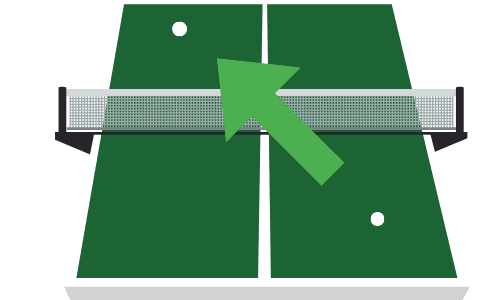
All the serving rules are also applicable to doubles play. In addition, there are two other guidelines that you should always keep in mind.
- In doubles, your service must go diagonally. The first drop of your service must be on the right-hand side of your board and after crossing over the net, it must bounce on the right-hand side of the receiver’s board.
- After the completion of your service, the receiver will be the server and your doubles partner will be the receiver.
Let’s illustrate this with an example.
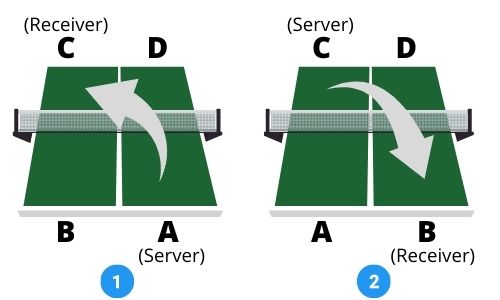
Suppose, in a doubles match, team 1 pairs with two players, A and B whereas team 2 pairs with players C and D.
The game starts with player A of team 1 serving diagonally from the right side to the right side to player C of the opponent team.
After delivering 2 consecutive serves, it’s now the turn of service for team 2 where C will serve B, the partner of player A.
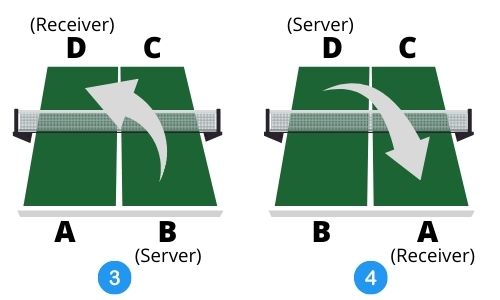
The opportunity to serve rotates from one team to another team after every 2 consecutive serves and the receiver becomes the next server. So B gets the next opportunity to serve and D (partner of C) will return the serve.
The alteration of server and receiver goes in this sequential order till the end of the game.
The Exception Makes the Rule
Unfortunately, a person with a physical disability can follow all these rules. To make things convenient for them, in para table tennis, there are some specified relaxations in serving rules.
3 Most Common Service Errors at Beginners’/ Recreational Level
I have witnessed service errors in many club/ district/state-level tournaments, most of which fall into three common categories.
- Not resting the ball freely on the palm
- The height of the throw is well below 16 cm (6.3 inches)
- Serving within the end line of the table
Wrapping Up
You may be playing for recreation and don’t care to obey all these rules. Then suddenly, you decide to play any tournament. That time you may face some unwanted situations for not following all these rules.
Following these rules has also a huge impact on developing you as a better player. You will be able to generate more speed and spin in your service which may confuse your opponent.
Table Tennis serving rules deal with several terms like “Minimum Height of 16 cm”, “Ball Should Rise Vertically”, and “Don’t hide the ball during service”, which are hard to judge. So be careful, otherwise, you may lose points for not delivering a legal table tennis serve.
You will also find these official table tennis serve rules in the ITTF handbook that is published every year in January.
To summarize the above topic, check the nice YouTube video uploaded by PingSkills.
Related Topic: “How to Score in Table Tennis?: A Beginner’s Guide“
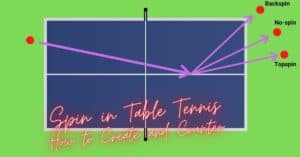


can you serve to either side slyly